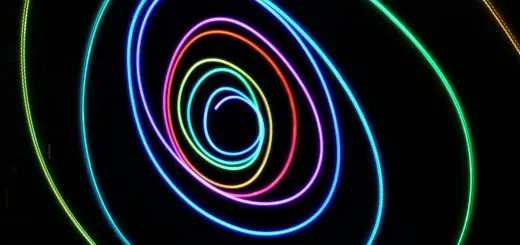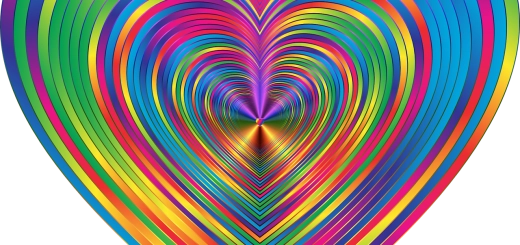Cao Dai Ceremony: Divine Messages and Spiritual Practices

Looking for more amazing products? Check out our online store and explore our collection here! Happy shopping!
Before diving in, please note: This post is for informational purposes only. If you’d like to know more about how we approach topics, feel free to check out our friendly Disclaimer Page.
Hey there, amazing readers! 
We’re committed to delivering quality posts, and your support (even just sticking around despite the ads) means everything to us. So, bear with us, and thanks for helping us keep the good vibes rolling. Now, on to the fun stuff!
TRANSLATE BUTTON AT THE END OF THE ARTICLE
Introduction to Cao Dai Ceremony
A Quick Overview
The Cao Dai ceremony is a fascinating religious practice that combines elements of several different belief systems, including Buddhism, Taoism, Confucianism, and Catholicism.
Followers of Cao Dai, known as Caodaists, believe in a universal truth that transcends individual religions.
The ceremony involves complex rituals, colorful ceremonies, and spiritual practices aimed at connecting with the divine.
Cao Dai is a relatively modern religion, having been founded in the 1920s in Vietnam.
The movement has since spread to other countries, attracting a diverse group of followers seeking spiritual fulfillment.
Origin and Beliefs of Cao Dai
Cao Dai was founded in 1926 in Vietnam by Ngo Van Chieu, who claimed to have received a vision from God directing him to establish a new religious movement.
The belief system of Cao Dai centers around the idea of a supreme being known as the "Cao Dai" or "Highest Power." This deity is believed to govern the universe and guide humanity towards peace and enlightenment.
Caodaists also venerate a pantheon of saints, including figures from history such as Victor Hugo, Sun Yat-sen, and Joan of Arc.
The religion emphasizes the unity of all religions and seeks to promote harmony among different faiths.
The Practices of Cao Dai Followers
Caodaists adhere to a strict code of ethics that emphasizes compassion, non-violence, and honesty.
Followers are expected to lead virtuous lives and strive for self-improvement through prayer, meditation, and good deeds.
The Cao Dai ceremony involves a series of rituals that are performed with precision and reverence.
These rituals include elaborate costumes, intricate dances, and the chanting of sacred texts.
Caodaists believe that these practices help them to connect with the divine and receive spiritual guidance.
The Role of Divine Messages
Central to the Cao Dai ceremony is the belief in divine messages transmitted by spiritual mediums known as "co." These mediums are believed to be able to communicate with the spirit world and receive guidance from the gods.
The messages are written down and interpreted by religious leaders, who use them to make decisions about the direction of the religion.
Caodaists believe that these messages provide insights into the will of the divine and offer guidance on how to live a virtuous life.
Rituals and Symbols in Cao Dai Ceremony
The Cao Dai ceremony is rich in symbolism and ritual, with each element holding deep spiritual significance.
The most prominent symbol of Cao Dai is the "divine eye," which represents the all-seeing wisdom of the deity.
Other important symbols include the yin-yang symbol, the lotus flower, and the holy books of the religion.
Rituals in the Cao Dai ceremony often involve the lighting of incense, the offering of fruit and flowers, and the recitation of prayers.
These rituals are designed to create a sacred space and invite the presence of the divine.
The Structure of Cao Dai Worship
Cao Dai worship is structured around a hierarchy of clergy, with priests, bishops, and cardinals leading the faithful in prayer and ceremony.
The clergy wear colored robes that correspond to their rank within the hierarchy.
Worship services are held in temples, which are ornately decorated with colorful murals, statues, and altars.
The temples are considered sacred spaces where the faithful can come to commune with the divine and seek spiritual guidance.
Worship services are conducted with precision and reverence, following a set order of prayers, chants, and rituals.
Cao Dai Temples and Holy Sites
Cao Dai temples are architectural marvels, characterized by their vibrant colors, intricate carvings, and ornate decorations.
The most famous Cao Dai temple is the Holy See Temple in Tay Ninh, Vietnam, which serves as the headquarters of the religion.
The temple features a large central hall adorned with statues of saints and religious figures, as well as colorful murals depicting scenes from Cao Dai mythology.
Other important holy sites include the Great Divine Temple in Ho Chi Minh City and the Tay Ninh Holy See, where the religion’s most important ceremonies are held.
Cao Dai Ceremonial Garments
One of the most striking aspects of the Cao Dai ceremony is the elaborate ceremonial garments worn by the clergy and followers.
These garments are designed to reflect the hierarchy of the religion and are color-coded to signify the wearer’s rank.
Priests wear white robes, bishops wear yellow, and cardinals wear red.
The garments are often adorned with intricate embroidery, symbols, and designs that represent the teachings and beliefs of Cao Dai.
The wearing of ceremonial garments is seen as a sign of respect and devotion to the divine.
Music and Chants in Cao Dai Rituals
Music and chants play a central role in Cao Dai rituals, serving to create a sense of sacredness and reverence.
The chanting of sacred texts, known as "cao," is believed to invoke the presence of the divine and connect the faithful with the spiritual realm.
Musical instruments such as drums, gongs, and bells are also used during worship services to create a sense of harmony and unity.
The music and chants in Cao Dai rituals are designed to enhance the worship experience and help the faithful to focus their minds on the divine.
The Importance of Meditation in Cao Dai
Meditation is a core practice in Cao Dai, with followers encouraged to set aside time each day for quiet reflection and introspection.
Meditation is seen as a way to connect with the divine within oneself and cultivate inner peace and clarity.
Caodaists believe that through meditation, they can purify their minds and bodies and align themselves with the cosmic energies of the universe.
The practice of meditation is designed to help followers achieve spiritual enlightenment and deepen their connection to the divine.
Cao Dai Ethics and Moral Values
Cao Dai places a strong emphasis on ethical behavior and moral values, with followers expected to adhere to a strict code of conduct.
The religion teaches compassion, kindness, and respect for all living beings, as well as honesty, integrity, and humility.
Caodaists are encouraged to lead virtuous lives and to treat others with fairness and empathy.
The ethical principles of Cao Dai are based on the belief that all beings are interconnected and that harmony and peace can only be achieved through love and understanding.
The Future of Cao Dai in Modern Society
In conclusion, the Cao Dai ceremony continues to thrive in modern society, attracting a diverse group of followers from around the world.
The religion’s message of unity, peace, and harmony resonates with many people who are seeking spiritual fulfillment and a sense of connection to something greater than themselves.
As society continues to evolve and change, Cao Dai offers a timeless message of love, compassion, and understanding that is as relevant today as it was when the religion was founded.
With its rich traditions, colorful ceremonies, and profound spiritual practices, Cao Dai is sure to remain a vibrant and important part of the religious landscape for years to come.

The Enlightenment Journey is a remarkable collection of writings authored by a distinguished group of experts in the fields of spirituality, new age, and esoteric knowledge.
This anthology features a diverse assembly of well-experienced authors who bring their profound insights and credible perspectives to the forefront.
Each contributor possesses a wealth of knowledge and wisdom, making them authorities in their respective domains.
Together, they offer readers a transformative journey into the realms of spiritual growth, self-discovery, and esoteric enlightenment.
The Enlightenment Journey is a testament to the collective expertise of these luminaries, providing readers with a rich tapestry of ideas and information to illuminate their spiritual path.
Our Diverse Expertise
While our primary focus is on spirituality and esotericism, we are equally passionate about exploring a wide range of other topics and niches 

To ensure we provide the most accurate and valuable insights, we collaborate with trusted experts in their respective domains 
Our blog originally focused on spirituality and metaphysics, but we’ve since expanded to cover a wide range of niches. Don’t worry—we continue to publish a lot of articles on spirituality! Frequently visit our blog to explore our diverse content and stay tuned for more insightful reads.
Hey there, amazing reader! 
Check out our store here and take a peek at some of our featured products below! Thanks for being awesome!











